Experts analyze how the camera performance of `` iPhone 11/11 Pro '' has evolved

Inside the iPhone 11 Camera, Part 1: A Completely New Camera
https://blog.halide.cam/inside-the-iphone-11-camera-part-1-a-completely-new-camera-28ea5d091071
Camera functions have evolved on the iPhone 11 and iPhone 11 Pro, but there seems to be no dramatic evolution in hardware. Processing on software such as “ Deep Fusion ”, a new image processing system available from iOS 13.2 and “Night Mode” specialized for shooting in the dark, seems to have evolved greatly.
You can check what kind of photos you can take in the iPhone 11 series night mode by checking the following article.
Review photos and movies with a triple camera with transformational performance of `` iPhone 11 Pro ''-GIGAZINE
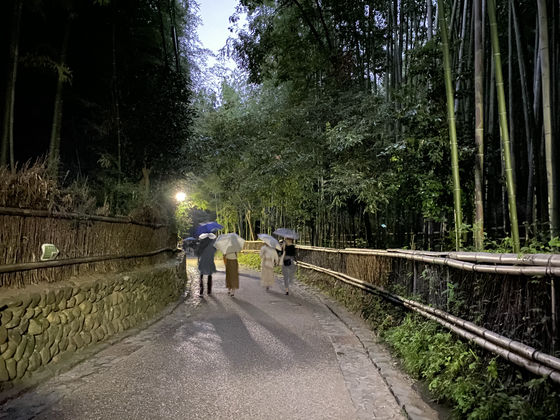
◆ Basic mechanism of iPhone camera
In the first place, users are not taking pictures on the iPhone. What this means is that before the user taps the shutter button, the iPhone has already taken multiple images, and the software is acquiring the image at the moment when the shutter button was tapped. is.

When you open the camera app, it starts something like an image
Users who don't know this mechanism will misunderstand that they shot the image, but in fact, the iPhone only picks the best image from the images automatically taken by the OS, and at what timing It can be said that the user simply specified whether to select an image.
Furthermore, according to Apple, the output image will be a composite of multiple exposures.

◆ About iPhone RAW images and Smart HDR
Such an iPhone camera has a feature called “
The human eye has very high performance and a dynamic range of about 20 stops is possible. On the other hand, at the time of article creation, the latest model α7R IV as a full-size SLR camera can have a dynamic range of about 15 stops when the sensitivity is low , and the iPhone 11 series can have a dynamic range of about 10 stops. In the case of a film negative film , the dynamic range is about 13 stops.
The iPhone's smart HDR takes a different approach to improving the dynamic range, which Sebastiaan describes as “fraud”. The iPhone is not a wide dynamic range sensor with more than 15 stops that can express the details of bright and dark areas of the image at the same time, but a smart software that can integrate them with a sensor that can acquire images sufficiently quickly, The dynamic range has been improved. In other words, the process that the α7R IV relies on a high-spec sensor is performed on the software in the case of the iPhone's smart HDR. Of course, this 'software processing' does not require any user interaction and is performed automatically.
However, smart HDR has a trade-off aspect, and it seems that noisy images are generated if the iPhone camera sensor is biased to high-speed and short-time exposure. Therefore, RAW images taken with iPhone XS and iPhone XR cameras have the side effect of losing the details of the photos.
The following image is the original image taken with the iPhone XS on the left, and the image on the right with the editing software greatly reduced noise. Certainly, the original image is noisy when compared.
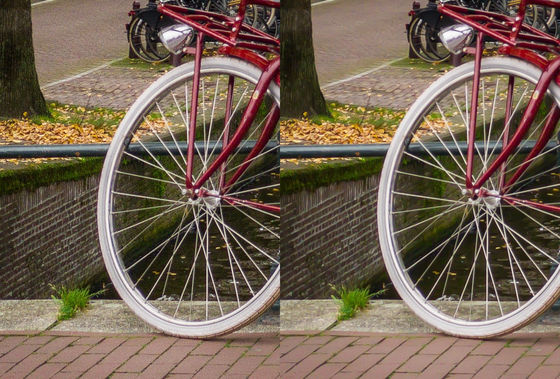
In this way, Apple processed the RAW image of the photograph taken with the software `` cleanly '' and provides it to the user, so all the pictures taken with the iPhone are `` as if it were a photo with a skin filter '' There is also a blame. In fact, iPhone's photos all have smooth textures, so in many cases you can take great photos, but there is also a weakness that loses the details of the photos.
A GIF image that alternately displays iPhone XS RAW images and Smart HDR photos. RAW images are more detailed in details such as leaves. 
As a result, shooting with RAW images has become a boom among iPhone users who make full use of the camera functions, and camera apps such as Halide have become popular. For example, in the case of the Halide app, it is possible to process the image so that the details of the photo are not lost while restoring the dynamic range in the same way as smart HDR by editing after acquiring the RAW image.
The following images are images taken with the iPhone XS Smart HDR (left) and edited RAW images taken with the iPhone XS (right). The photo on the right shows the texture of the hood of the car more precisely.
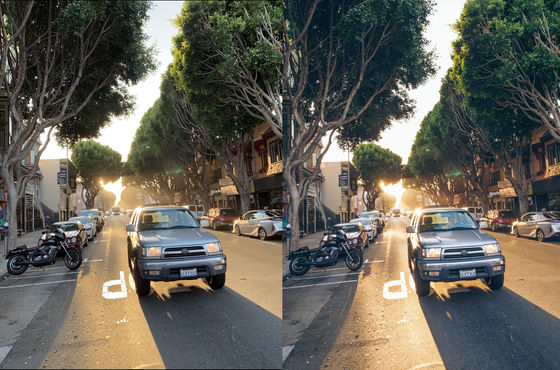
However, smart HDR has evolved in the iPhone 11 series camera application, the roughness seen on iPhone XS / XR disappears, and the texture becomes too smooth and the whiteout part is flattened less Sebastiaan wrote.
◆ About photo details
Photo details are a constant requirement for camera enthusiasts and require many factors, such as lens blur, increased camera megapixels, and sensor size. With
Sebastiaan thought that the range of ISO sensitivity in the iPhone 11 series was wide because of the night mode. In fact, because the range of ISO sensitivity has been widened, the iPhone 11 series can now take pictures with less noise in a wider range of brightness environments. However, the minimum ISO sensitivity value was “20” for iPhone XS, but “32” for iPhone 11 Pro, so if you shoot in a bright environment, software image processing will be entered. With no RAW images, the iPhone 11 series is slightly more noisy.
The left image below is a cropped RAW image taken with iPhone XS, and the right is a cropped RAW image taken with iPhone 11 Pro. Sebastiaan notes, “Although there is a slight increase in noise, the sensor (on iPhone 11 Pro) seems to be able to shoot more finely and there are improvements at all levels.”

In the story of the dynamic range of smart HDR, I compared iPhone 11 with Sony's α7R IV, but the sensor size of α7R IV is full size (35 mm), whereas the sensor of iPhone 11 series is It is very compact as follows.
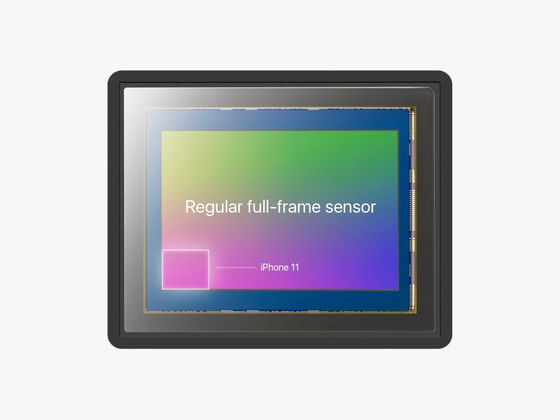
In most cases, when editing a user's photo, changes are made to the entire image, such as making the whole image brighter or sharper. However, photo editing at a professional level involves partially editing the photo, such as smoothing only the skin of the model.
For example, when it is empty,
The left of the following image is a picture that has been processed on the iPhone software, and the right is a RAW image.

However, the image processing performed on the software of the iPhone 11 series is not perfect, so it seems that there are cases in which some details are lost. The reason is that iOS doesn't recognize the object clearly in the image as 'This is a cactus and this is the sky.' In addition, since the iPhone has a face detection function, if it is determined to be a human face by this function, image processing will be performed so that the details remain finer.
Apple uses machine learning to divide the photos into small pieces, and each of them is processed individually, but Sebastiaan notes that it is done very quickly.

Sebastiaan says, “The different image processing in each area has evolved the iPhone 11 series into a completely different camera.”
Although it is difficult to objectively compare the quality of noise reduction used in the iPhone 11 series and the iPhone XS, it is said that the details of the noise reduction in the iPhone 11 have been retained. Sebastiaan said, “I can guess that the new noise reduction in the iPhone 11 series now uses machine learning to“ fill in ”details that can be lost due to noise. It ’s a noise reduction technology that is a welcome improvement. ”
◆ Super wide-angle lens
The iPhone 11 Pro has a camera with a super-wide-angle lens as the third camera. However, RAW images cannot be obtained from images taken with this ultra-wide-angle lens. Sebastiaan says, 'By updating the software, we will be able to acquire RAW images from data taken with an ultra-wide-angle camera.'
The following photos were taken with iPhone 11 Pro,
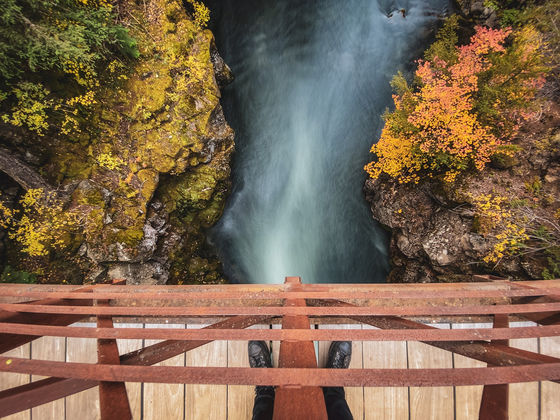
The iPhone 11 Pro's ultra-wide-angle camera is the darkest lens of the three cameras, so you need to set a higher ISO. If that happens, noise will increase in the image, so noise reduction will inevitably increase and details will be lost.
Also, it seems that the ultra-wide-angle camera has a problem that

◆ Summary
Sebastiaan said that the camera performance of the iPhone 11 series released in 2019 has improved dramatically from both hardware and software aspects, `` iPhone 11 and iPhone 11 Pro are suitable for reigning at the top of smartphone cameras '' It has become.
It seems that the photos taken with the past iPhone were about `` suitable for sharing on SNS '', but due to the significant improvement in image processing, `` iPhone 11 series is the first iPhone that can challenge digital cameras Sebastiaan wrote.
The following images are RAW images taken with the α7R IV and
In addition, Sebastiaan does not disclose which photograph was taken with which camera, but `` I will probably know which camera was taken with which camera, but comparing it to a picture of sufficiently good quality “The camera manufacturer needs to feel the iPhone camera a threat.”
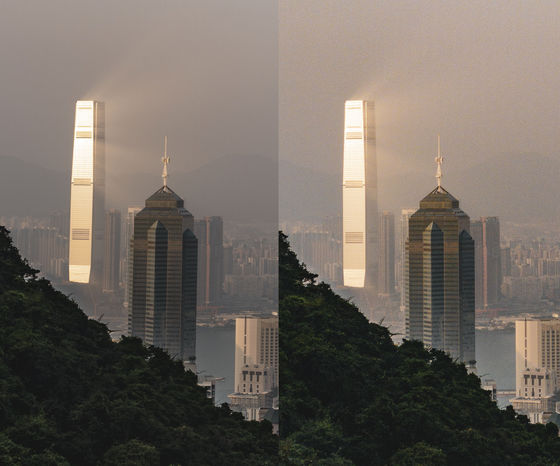
However, Sebastiaan pointed out that if you save a photo in an image file format such as JPEG or HEIC , a lot of data useful for editing is destroyed.
Although the RAW image of the iPhone 11 series is output quite brightly, it seems that the details can be left by suppressing the exposure when editing even the part that seems to be whiteout.
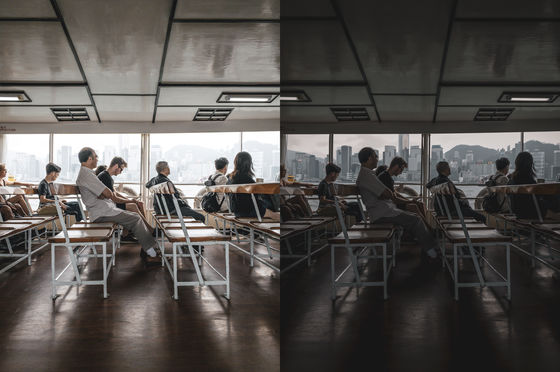
Also, when shooting snow scenes etc. with the camera app, the white balance may be distorted, so the snow may be pale or yellowish, but if it is a RAW image, by adjusting the white balance later, The color of the image can be expressed more accurately.
Therefore, Sebastiaan recommends the use of an app that can simultaneously acquire RAW images such as Halide and JPEG images after image processing by software.
Related Posts:







